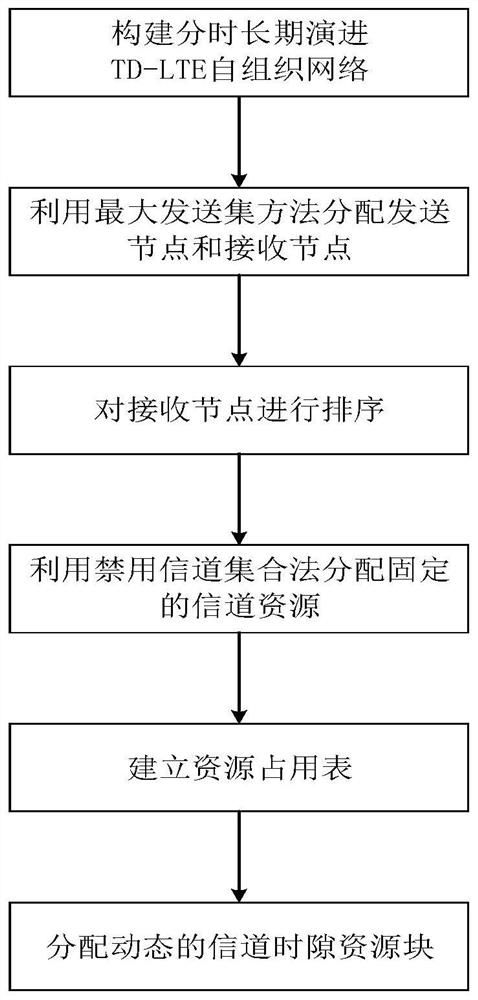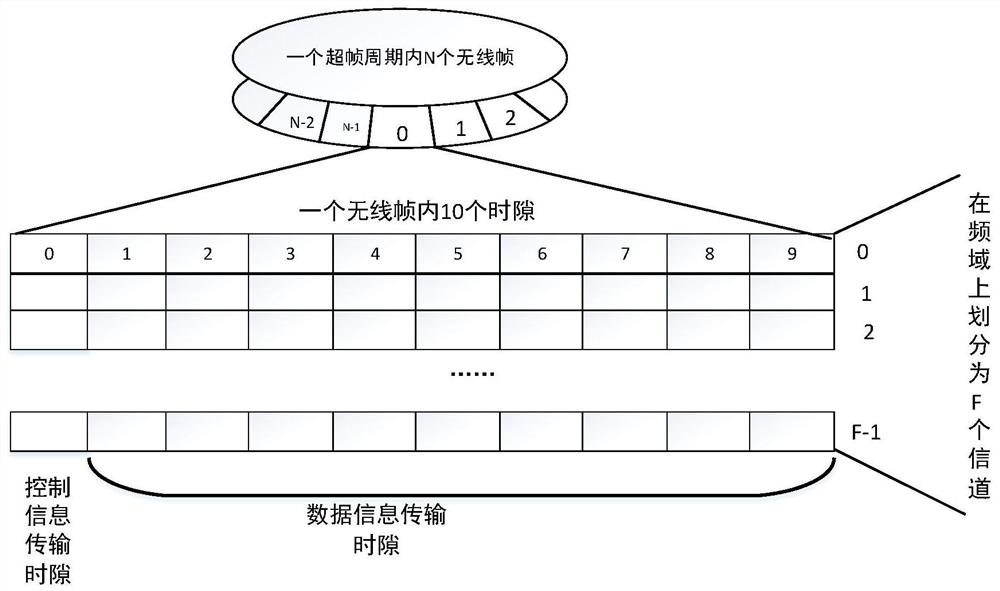Resource scheduling method based on td-lte self-organizing network
A self-organizing network and resource scheduling technology, which is applied in the field of resource scheduling based on time-division long-term evolution TD-LTE self-organizing network, can solve problems such as waste of channel resources, waste of multi-channel resources, waste of time slot channel resources, etc., to reduce The effect of data transmission delay, improving channel resource reuse rate, and alleviating network congestion
- Summary
- Abstract
- Description
- Claims
- Application Information
AI Technical Summary
Problems solved by technology
Method used
Image
Examples
Embodiment Construction
[0041] The present invention will be further described below in conjunction with the accompanying drawings and embodiments.
[0042] refer to figure 1 , the steps of the present invention are further described in detail.
[0043] Step 1, build a time-sharing long-term evolution TD-LTE self-organizing network.
[0044]Time-division duplex TDD is adopted, receiving and transmitting are in different time slots of the same channel, and time is used to separate the receiving and transmitting channels. The retransmission indicator channel and the format indicator channel in the TD-LTE standard physical layer are respectively removed to obtain the TD-LTE ad hoc network physical layer.
[0045] The physical layer of the TD-LTE ad hoc network includes a physical downlink shared channel PDSCH, a physical downlink control channel PDCCH, a synchronization signal PSS / SSS, and a physical broadcast channel PBCH.
[0046] refer to figure 2 , to describe in detail the positions of channel...
PUM
 Login to View More
Login to View More Abstract
Description
Claims
Application Information
 Login to View More
Login to View More - R&D
- Intellectual Property
- Life Sciences
- Materials
- Tech Scout
- Unparalleled Data Quality
- Higher Quality Content
- 60% Fewer Hallucinations
Browse by: Latest US Patents, China's latest patents, Technical Efficacy Thesaurus, Application Domain, Technology Topic, Popular Technical Reports.
© 2025 PatSnap. All rights reserved.Legal|Privacy policy|Modern Slavery Act Transparency Statement|Sitemap|About US| Contact US: help@patsnap.com



